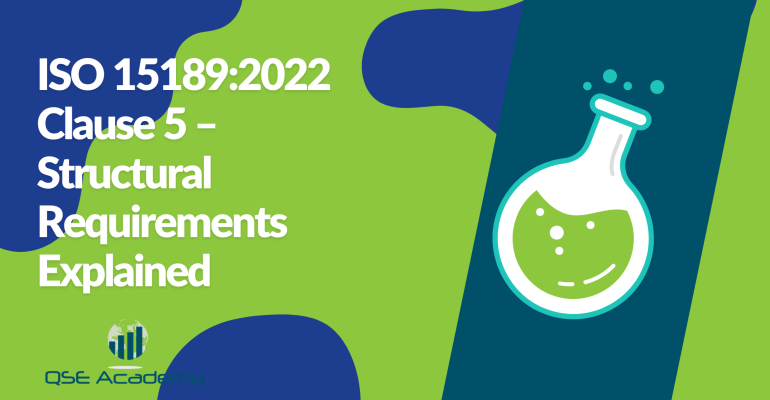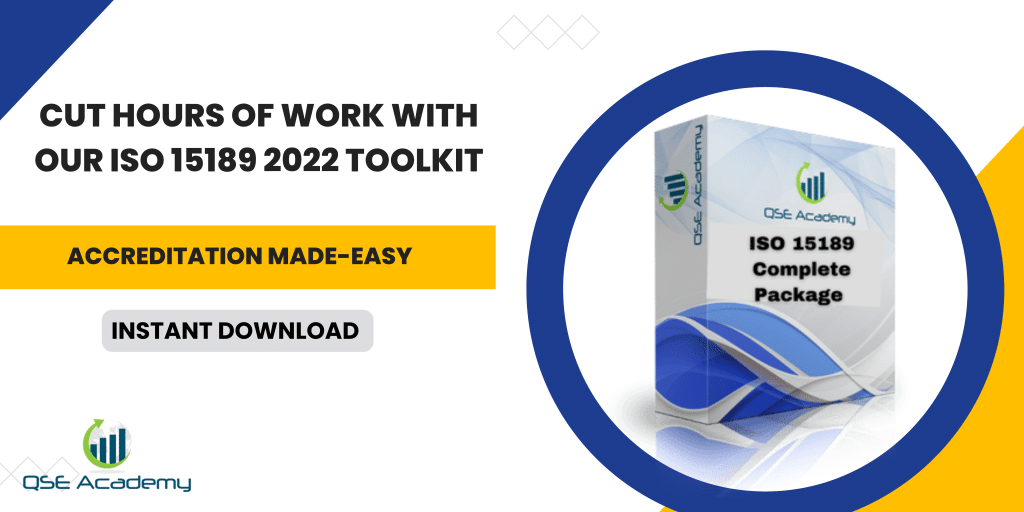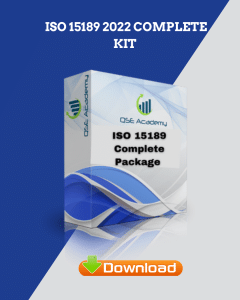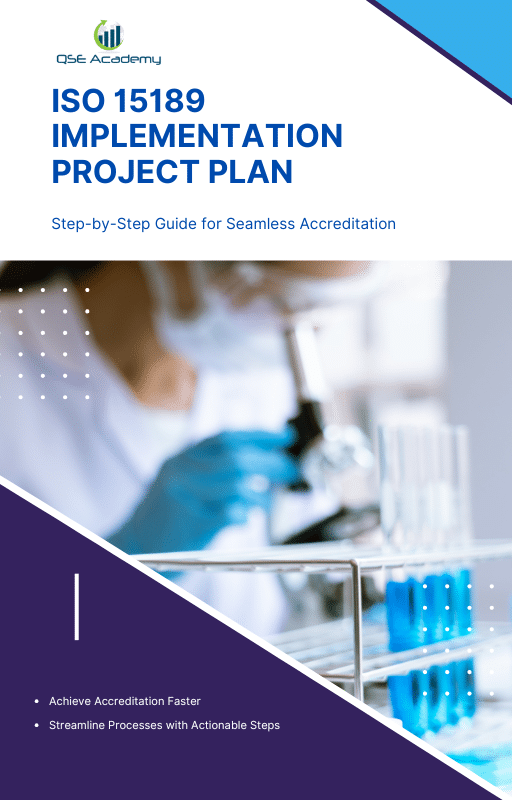ISO 15189:2022 Clause 5 – Structural Requirements Explained
Last Updated on October 22, 2025 by Hafsa J.
Understanding How Structure Builds Credibility in Medical Laboratories
When I work with labs preparing for ISO 15189 accreditation, one of the first things I ask is, “Who’s responsible for what?” You’d be surprised how many teams pause. Clause 5 is designed to prevent exactly that confusion.
It’s not just about having an organogram—it’s about proving your lab is structured to deliver reliable, impartial, and consistent results. The right structure builds confidence, both inside your team and with your clients.
Here’s what I’ve noticed: when responsibilities are unclear, accountability disappears, and mistakes multiply. But when your structure is well-defined—roles, authority, communication lines—everything flows smoother.
In this section, you’ll learn how to build a structure that satisfies auditors and strengthens your lab’s daily operations.
What ISO 15189 Clause 5 Really Requires – The Foundation of a Competent Laboratory
Clause 5 lays down the skeleton of your laboratory. It’s what defines who you are legally, how decisions are made, and how authority flows. Without it, even the most advanced equipment and skilled personnel can’t guarantee consistent quality.
Here’s what I’ve noticed: labs often treat structure as an HR formality—an org chart hanging on a wall. But auditors view it as the backbone of impartiality and accountability. They want to see that your structure prevents conflicts, supports transparency, and empowers qualified people to make decisions.
Clause 5 expects your lab to:
-
Establish a legal identity (who owns and operates the lab).
-
Define roles and responsibilities clearly.
-
Maintain authority lines that ensure impartiality and confidentiality.
-
Show how decisions are made and reviewed at every level.
Pro Tip: Don’t rely on generic charts. Create an Organizational Structure File that includes job titles, names, and reporting relationships. When assessors ask, “Who’s responsible for authorizing test reports?”—you’ll have an answer backed by documentation.
Common Mistake: Using outdated organograms. Any staff change, promotion, or new testing scope should trigger an immediate update.
Defining Roles, Responsibilities, and Authorities – Who Does What and Why It Matters
When I audit or coach labs, one pattern always shows up—people wear too many hats, and no one knows exactly who’s accountable for what. Clause 5 eliminates that confusion by requiring you to clearly define and document roles, responsibilities, and authorities.
Start with the key positions:
-
Laboratory Director or Head: Ultimately responsible for quality and technical validity of results.
-
Quality Manager: Oversees the quality management system and ensures compliance with ISO 15189.
-
Technical Managers or Section Heads: Handle day-to-day testing operations and technical oversight.
-
Authorized Signatories: Those approved to release test reports.
The goal is simple—everyone in the lab should know their lane. When a problem occurs, auditors should be able to trace responsibility immediately.
Here’s what I recommend:
-
Write clear job descriptions that match ISO 15189 requirements.
-
Maintain a Responsibility & Authority Matrix showing who’s accountable for each clause or process.
-
Include delegation records—especially for temporary or acting roles.
Pro Tip: Review your authority structure at least once a year or after any staffing change. It keeps accountability aligned with reality, not assumptions.
Common Mistake: Listing job titles but forgetting to define decision-making authority. A “Quality Manager” title alone doesn’t prove they can approve procedures or stop non-conforming work.
Management Commitment and Accountability – Leadership as a Compliance Driver
I’ve seen labs with excellent documentation still struggle during accreditation simply because leadership wasn’t visible in the system. Clause 5 makes it clear — management isn’t just a signature on a policy; it’s an active driver of compliance and culture.
Your leadership sets the tone for how seriously the lab takes quality, impartiality, and patient care. When management is engaged, staff follow. When management is detached, even the best systems fade into paperwork.
Here’s how leadership should demonstrate commitment:
-
Allocate resources: Ensure the lab has the people, equipment, and training it needs to meet quality objectives.
-
Attend management reviews: Participate, don’t just delegate. Assessors often ask leaders direct questions about decisions and risks.
-
Promote communication: Encourage open dialogue between technical, administrative, and quality teams.
-
Lead by example: Managers should comply with the same rules and policies expected of staff.
Pro Tip: Document leadership involvement through meeting minutes and management review summaries. When an assessor asks, “How does management ensure quality objectives are met?”—you’ll have solid, traceable evidence.
Example: In one hospital laboratory, the director started attending weekly quality meetings for just 20 minutes. Within three months, staff compliance improved dramatically, and audit findings dropped to zero.
Communication Pathways and Decision-Making in the Laboratory
A well-structured lab can still fall apart if communication is poor. Clause 5 expects clear, documented communication channels—because unclear instructions, delayed messages, or informal decisions often lead to errors and nonconformities.
Here’s what I’ve seen happen: in some labs, quality information gets stuck at the supervisor level. Technicians don’t know about policy changes until after an audit, or management decisions never reach the people who need to act. ISO 15189 fixes that by expecting defined pathways for information flow.
Here’s how to strengthen communication under Clause 5:
-
Establish reporting lines. Define who reports to whom, and for what type of issue—technical, quality, or administrative.
-
Set meeting routines. Schedule regular coordination meetings between quality and technical teams.
-
Document communication procedures. Internal memos, minutes, and updates should be controlled documents.
-
Encourage bottom-up communication. Staff should be comfortable raising quality concerns without fear of blame.
Pro Tip: Add a simple “Communication Flow Chart” in your quality manual—it shows auditors how information travels across departments.
Example: One lab I worked with implemented a 10-minute daily “handover huddle” between shifts. That small change cut reporting delays by 25% and ensured that management updates reached every section quickly.
Common Pitfall: Relying on verbal updates only. Auditors expect documented evidence of how decisions and instructions are communicated and acted upon.
Integration of Structural Requirements into the Quality Management System
Clause 5 isn’t just about hierarchy—it’s about how structure lives inside your quality management system. The best labs I’ve worked with don’t treat their organogram as a separate piece of paper; it’s part of how every process, record, and decision connects.
Here’s how to make your structure work with your QMS instead of beside it:
-
Link your documents. Every procedure, from sample handling to reporting, should name the responsible person or role. This aligns structure with daily operations.
-
Control your documents. Keep your organizational chart and job descriptions as controlled documents—versioned, reviewed, and updated after any personnel or scope changes.
-
Embed responsibilities. Connect each ISO 15189 clause to its accountable role in your Responsibility Matrix. That way, auditors can trace compliance to people, not just policies.
Pro Tip: Review your structure during each management review or after any leadership changes. It’s one of the fastest ways to catch gaps before an audit does.
Example: I once worked with a lab that added new testing services but forgot to update their organogram. During their next audit, assessors flagged it as a minor nonconformity. After aligning their documentation with the new scope, the issue disappeared permanently.
Common Pitfall: Treating structure updates as admin work. It’s actually a quality-control safeguard—one that shows your lab evolves with its people and processes.
Auditing and Reviewing the Laboratory Structure
Even the best-designed structure needs to be tested. Clause 5 expects you to periodically verify that your lab’s structure still supports competence, impartiality, and effective communication. That’s where internal audits and management reviews come in.
Here’s what I’ve seen work well:
-
Audit your structure like a process. Don’t just check documents—interview staff. Ask if they understand their responsibilities and who to report issues to.
-
Look for alignment. Your quality manual, organogram, and job descriptions should all tell the same story. If they don’t, fix the inconsistencies before your next external audit.
-
Document everything. Keep audit checklists, findings, and corrective actions related to structure. They show continuous improvement and management oversight.
Pro Tip: Add a section in your internal audit checklist titled “Organizational Structure Effectiveness.” It’s a small detail that auditors appreciate—it proves you’re not just compliant, you’re proactive.
Example: One clinical lab I helped discovered through an internal audit that their Quality Manager didn’t have authority to stop nonconforming work. By adjusting their delegation policy, they not only fixed the issue but also avoided a major finding in the upcoming accreditation audit.
Common Mistake: Treating structure reviews as static. Your lab’s structure should evolve with changes in services, technology, and personnel. If your setup looks the same year after year, it’s probably outdated.
FAQs – ISO 15189 Clause 5 Structural Requirements
Q1: Why is defining structure so important under ISO 15189?
Because structure ensures accountability. When every role is clearly defined, decisions are traceable, risks are easier to manage, and quality issues are resolved faster. It’s how your lab proves it operates with competence and integrity.
Q2: What documents do I need to demonstrate compliance with Clause 5?
Auditors will look for your organizational chart, detailed job descriptions, delegation or authority records, and management review minutes. These should align and clearly show who’s responsible for what.
Q3: How often should I review or update my laboratory structure?
At least annually—or immediately after any change in key personnel, services, or ownership. Regular updates prevent findings related to outdated documents or unclear responsibilities.
Q4: Can one person hold multiple roles under Clause 5?
Yes—but only if doing so doesn’t create conflicts of interest or risk impartiality. When roles overlap, document the separation of responsibilities clearly to show effective control.
Build Structure That Supports Quality and Trust
A strong laboratory structure isn’t just about compliance—it’s about confidence. When roles, responsibilities, and communication lines are crystal clear, your team performs better, risks drop, and auditors immediately see a culture of accountability.
In my experience, the labs that excel under ISO 15189 aren’t the ones with the most documents; they’re the ones where structure drives decisions, not confusion. Everyone knows their purpose, who to report to, and how their work supports quality and patient care.
So, take a moment to review your structure. Ask yourself:
-
Does every role have clearly defined authority?
-
Are staff aware of their reporting lines?
-
Do leadership and quality teams communicate regularly?
If any of those answers are “not quite,” now’s the perfect time to tighten it up.
Next Step: Download QSE Academy’s ISO 15189:2022 Clause 5 Implementation Toolkit—complete with editable organograms, authority matrices, and internal audit templates to help your lab meet structural requirements with clarity and confidence.
Whether it’s ISO 9001, ISO 22000, or the cosmetics-focused ISO 22716, I’ve spent my career I’m not here to call myself an expert—I prefer “enthusiast” because I truly love what I do. When I’m not writing about standards, you’ll probably find me playing Piano 🎹, connecting with people, or diving into my next big project💫. I’m an engineer specialized in the food and agricultural industry
make ISO standards less intimidating and more approachable for everyone.
turning complex jargon into clear, actionable steps that businesses can actually use.
There’s something incredibly rewarding about helping people navigate food safety and quality management systems
in a way that feels simple, practical, and even enjoyable.
I have a Master’s in QHSE management and over 12 years of experience as a Quality Manager
I’ve helped more than 15 companies implement ISO 9001, ISO 22000, ISO 22716, GMP, and other standards
My clients include food producers, cosmetics manufacturers, laboratories, and service companies
I believe quality systems should be simple, useful, and efficient.













